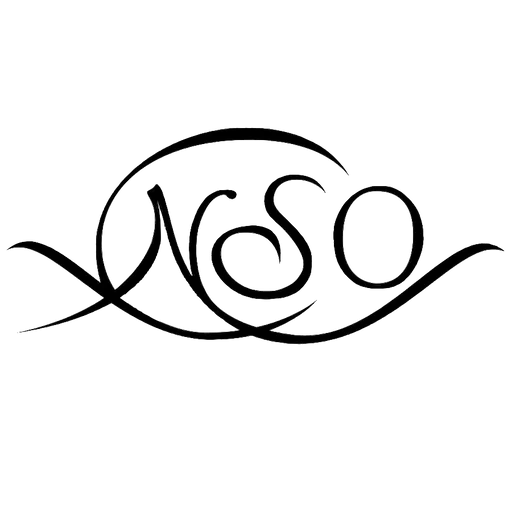Available from Sufi Journal via a digital subscription
“All that glistens is not gold—
Often have you heard that told.”
—William Shakespeare
The famous story of the four men examining an elephant in the dark which appears in Rumi’s Masnavi originated between 1500 and 1200 B.C. in Vedic Sanskrit hymns, the earliest sacred texts of Hinduism. The story is an illustration of the distinction between appearance and reality which has fascinated philosophers, scientists and mystics through the ages. As the story goes, an elephant arrived in a village at night, and instead of waiting until the morning, four villagers decided to visit the stable and examine the creature in the dark, as they had never seen an elephant. Different conclusions were reached by the villagers based on which part of the elephant they touched in the dark. One claimed the elephant was a flat and thin animal after touching the elephant’s ear, the other claimed it was like a pillar after touching the elephant’s leg, the remaining two similarly provided a different understanding of what an elephant is. Rumi concludes that if the unseeing people had held a candle and looked together, the differences would disappear as they would see the “reality” of the entire elephant instead of mere appearance:
“The sensual eye is just like the palm of the hand,
The palm has not the means of covering the whole of the beast.”
Perhaps the first time a person considers the difference between reality and appearance is when he or she encounters an optical illusion—such as the reflection of a stick in water making it seem bent, or the mirage created when refracted light makes it appear as if there was pool of water on the surface of the earth. The correct knowledge of the physical reality behind these optical illusions can easily be arrived at by further using our senses to examine more closely the stick or the earth’s surface. There are, however, some instances when our senses cannot bring us to a “correct” knowledge of reality. For example, humans can only see a limited spectrum of colors and hear a defined range of sounds. But, just because we can’t perceive some colors and sounds doesn’t mean these do not exist in reality. Furthermore, there are times when a correct knowledge of reality can never be arrived at, because in those instances the nature of human perception itself remains ambiguous. The gestalt figures are examples of such perceptions. We perceive the duck–rabbit figure sometimes as a duck and sometimes as a rabbit depending on the focus of our attention. It makes no sense to ask whether the figure is a duck or a rabbit. It is both and neither.
Sometimes, however, our bodily senses are not enough on their own to distinguish appearance from reality. When our senses are not sufficient to guide us towards reality, we have learned to use the power of our reasoning to sort out what is real from mere appearances. For example, it seems to us that the earth is stationary, as all our senses lead us to arrive at this conclusion. But, in fact, it has long been established that the earth rotates both on its axis and around the sun: the speed of Earth’s spin is about 1,000 mph and the orbital speed around the sun is about 67,000 mph. We can’t feel the earth rotating because we’re moving with it; at the same constant speed—the same way that while in an airplane we cannot feel its movement. It is the predictive power of the heliocentric view of our solar system based on the theory of gravitational force which explains and helps us to understand the physical reality of our situation. The power of our reasoning and cognitive ability guides us to abandon the world of appearance and embrace a new reality, namely, the earth is moving at a phenomenal speed on its axis and around the sun even though we cannot feel the movement.
The interesting question that arises from these observations is this: Is there a reality beyond what both our senses and cognitive capabilities show? Is there a reason to believe that the reality as shown by our faculties is the ultimate Reality? In other words, are our faculties ultimately capable of showing us the facts as they are and not just as they appear to us?
One argument designed to show the limit of what we can know by our reason and senses was introduced by the 18th-century German philosopher, Immanuel Kant (1724–1804). To put it very simplistically, Kant argues that our ability to comprehend the world as it appears to us—as a continuum in time and space—is the result of the information coming from the world being filtered through our senses and our innate modes of thinking. This means that the information has to conform to the constraints of our perceptions and cognitive abilities; it must be moulded to fit the spatial, temporal, causal, and other categories that our brain can comprehend. So for Kant, causation, space and time are not embedded features of the world, rather they are functions of our mind, which is prewired with these features. One of the implications of the Kantian argument is that we cannot know a true reality independent of our senses and our cognition. We are stuck in the domain of appearances or the world of phenomena because of our biological make-up.
Another way to cast the Kantian argument is to explore the difference in sensory and cognitive capabilities of different biological forms of life from simple organisms to very complex creatures like us humans. Take, for example, the case of a shrimp. The world that appears to a shrimp is nothing like the one that appears to us. Shrimps have panoramic vision and are very good at detecting movement. Their two pairs of antennae have sensors on them which allow them to feel and also allow them to smell or taste by sampling the chemicals in the water. The long antennae help the shrimp orient itself with regard to its immediate surroundings, while the short antennae help assess the suitability of prey. The shrimp brain is very small, composed of only a few nerve cell clusters. It is not difficult to imagine that the world as it appears to the shrimp is very different compared to what we perceive. We have evolved to have a very different and much more complex apparatus to process the information we receive from the world.
We can extend this argument to non-terrestrial organisms. We can imagine a non-carbon-based non-terrestrial being with alternative biochemistries who “perceives” the world completely differently through its senses and cognitive abilities which are drastically different from ours. Who is to say that the world as it appears to us is closer to reality than what appears to our imaginary alien? In addition, no future advancement in AI or bioengineering can possibly be a resolution of the Kantian argument with respect to the limit of our knowledge of reality. No matter how sophisticated we become in fine-tuning our mode of perception and our cognitive abilities, it would still remain the case that we are perceiving the world through a sensory and cognitive apparatus with its own limitations. To use a simple analogy, it is similar to changing our telescope while observing the sun. Each subsequent telescope will have better capabilities in providing information about the sun, but even with the most sophisticated telescope in hand we are limited to its power of observation and we can always imagine a more sophisticated telescope in the future to provide even more comprehensive information about the sun.
The Kantian argument puts a limit to our understanding of reality because of the inherent limitation of our sensory and cognitive capabilities. For Kant the reality or the world of noumena is beyond our reach. The only thing that we can say is that it exists. He does not suggest we have any other tools or methods at our disposal for understanding reality beyond our senses and cognitive abilities. We are bound and imprisoned in the world of appearance.
It is almost a cliché, nevertheless true, to say that all mystical and spiritual traditions view our perceptions of the world to be that of mere appearances and not of the true Reality. But the mystics arrive at this conclusion from a different perspective. Instead of assessing the nature of our sensory and cognitive abilities as Kant does, they “experience” Reality using a completely different approach and utilizing a different tool: they “see” themselves as part of Reality and not distinct from it. The Sufis, for example, see their self-identity or ego as an illusion and once they “see” through this illusion, they “see” Reality through the “eyes” of Reality. The Sufis one cannot arrive at such a “perception” by following arguments or memorizing sacred texts. One must be actively practicing the discipline through meditation, service or other techniques to discover the illusion of self-identity.
Even though we cannot evaluate the truth of the Sufi path rationally—since it is a matter of experience—there is much to learn from the Sufi perspective. The lesson is this: Whenever we bring our own ego into understanding and making judgments about the world—sometimes even unconsciously—we are prone to be biased in our judgments. Our ego tends to remove us further from reality and pushes us towards accepting appearances.
Psychologists have been conducting research on human judgment and decision-making for almost six decades and they have found that our biases create our own subjective reality in our interaction with the world. Subsequently, our constructed reality will determine our behavior in the world. One such bias is the case of illusory correlation or stereotyping. An example of illusory correlation is attributing negative behavior to a minority group even though such a negative behavior is equally prevalent among the majority group. Another prevalent form of bias is the tendency to accept an argument supporting a conclusion that corresponds with our values, beliefs and prior knowledge rather than considering the strength and validity of the argument.
It is, of course, easier to live in the world of appearances than to seek reality. This is borne out by the fact that most of us are ready to accept what we perceive at face value instead of suspending judgment until further enquiry. In this era of social media and the internet we are bombarded by ideologies, dogmas, falsehoods, and half-truths and are immersed in an environment in which people are encouraged to pursue comfort and what makes them feel better over pursuing truth and adhering to reality. It appears that our indifference to reality has become even more pronounced in recent times. I am here reminded of the character Cypher in the movie The Matrix who, after living in the real world, decides to go back to the Matrix (a world seemingly very similar to our world but created artificially by a computer program and fed into peoples’ brains through tubes). Cypher justifies his decision by saying: “I know this steak does not exist. I know that when I put it in my mouth, the Matrix is telling my brain that it is juicy and delicious. After nine years, you know what I realize? Ignorance is bliss.”
Despite the inherent limitations in our perceptions of Reality, one thing that differentiates us from other animals is that we are the only species whose members are aware of their own mortality and also cognizant of the fact that the world will continue to exist after we die. Our awareness of our own demise has led us to reflect upon the purpose of our brief existence on this planet. So far the best answer to this question is we must continue to strive to transcend the world of appearances in our journey towards the Truth.

